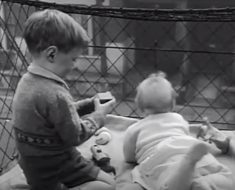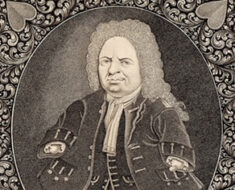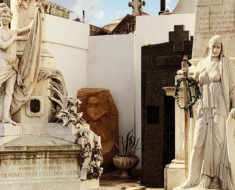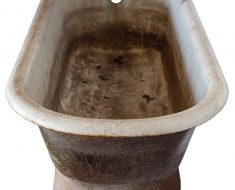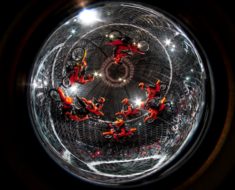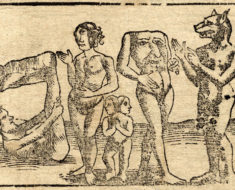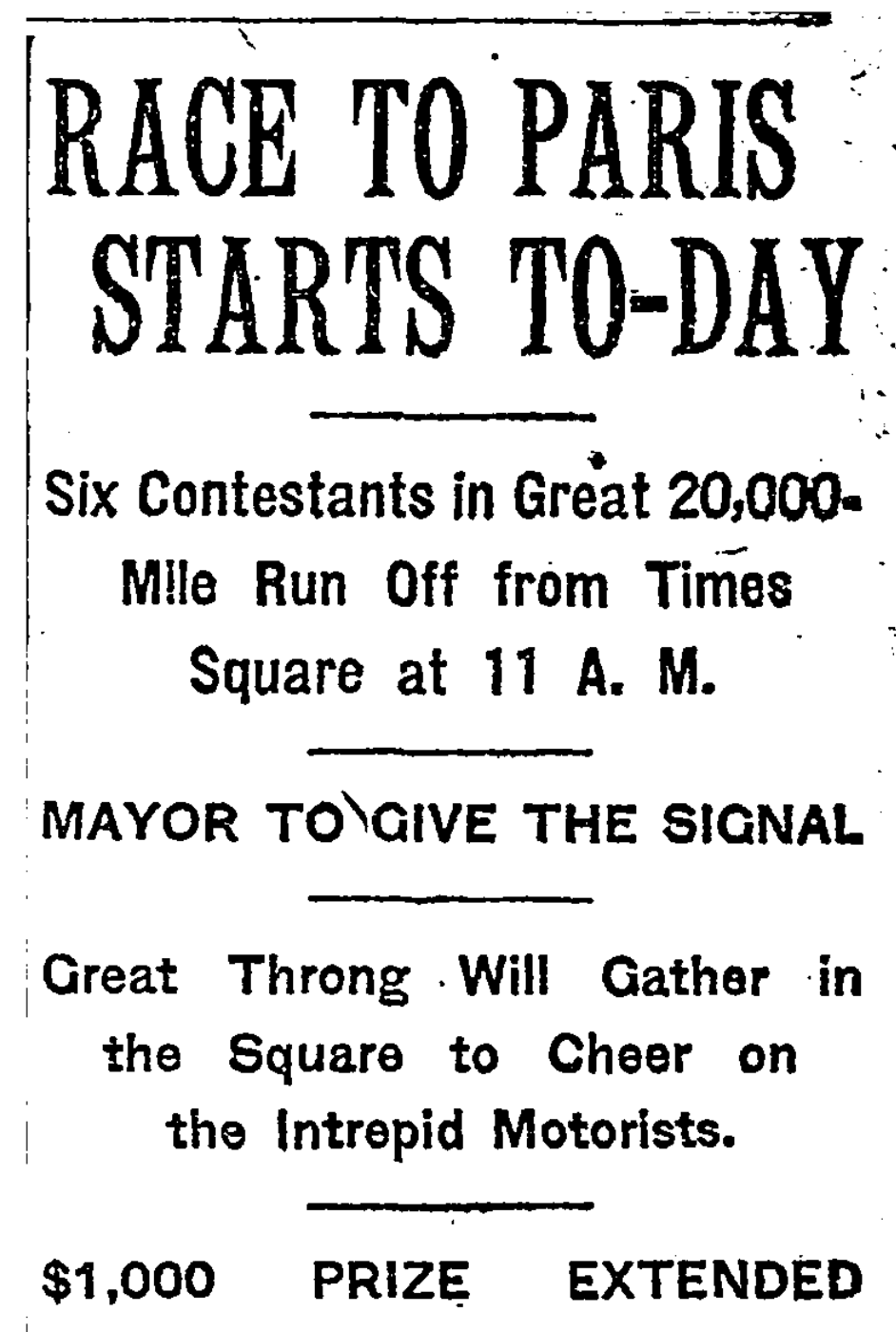
Race Day, as hyped in the New York Times on Feb. 12, 1908.
Abraham Lincoln’s birthday has long been celebrated by the automotive industry with fantastic deals and can’t-miss bargains. But many years before three-day sales dominated the holiday, a much grander event marked the occasion. On February 12, 1908, auto manufacturers from around the world gathered in Times Square to begin a race around the world—from New York City to Paris. It would become known as the Great Race of 1908.
The contest, co-sponsored by the New York Times and a Parisian paper, Le Matin, boasted a 20,000-mile route which ran across America to San Francisco, where a steamer would take the cars to Alaska, allowing a drive across the frozen Bering Strait (or carried by steamer, if needed), through Siberia, Europe, and culminating in the French capital. Whichever car entered Paris first would take home the grand prize of $1,000.
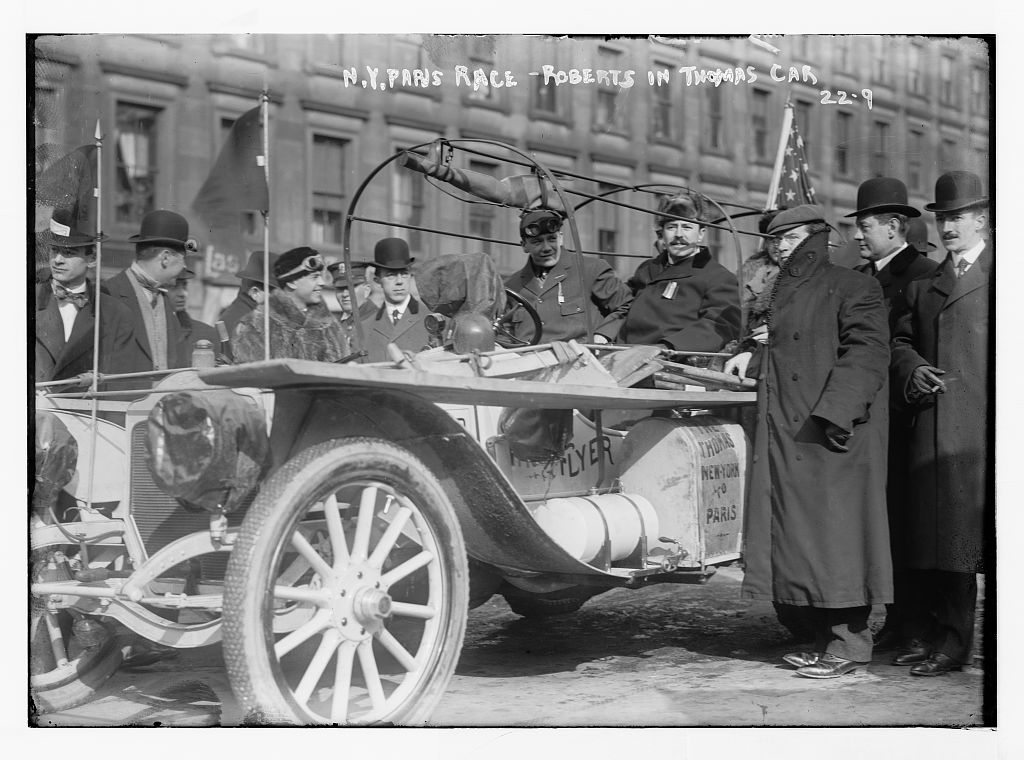
The Thomas Flyer, America’s entrant in the Great Race of 1908.
Six vehicles participated in the event: a De Dion-Bouton, Moto-Bloc, and Sizaire-Naudin from France; a Zust from Italy; a Protos from Germany; and the Thomas Flyer, representing America.
The Thomas car, built by the Thomas Motor Company, was a 1907 Model 35 with a 4-cylinder, 60-horsepower engine capable of reaching 60 mph. In addition, it was fully loaded with two shovels, two picks, two lanterns, eight searchlights, two extra gas tanks (with a capacity of ten gallons), five hundred feet of rope, a rifle and revolvers. It was also equipped with an attachable top—much like those used on covered wagons—that could wrap the entire car and offer an enclosed place to sleep.
Unfortunately, the concept of GPS was still nearly a century away.
As for the driver, the Thomas Motor Company tapped twenty-four-year-old Montague Roberts, who had won the 24-hour Endurance Derby at Brighton Beach in the same car the previous year. He was accompanied by George Schuster, a mechanic from the company, another mechanic, George Miller, and a reporter from the Times. Each of the competing cars was similarly staffed.
At 11:15 am, with 250,000 onlookers crowding around the competitors, the starting gun fired and the six cars launched into the daunting trek. Not only were there very few paved roads ahead, but automotive engineering was still in its infancy (cars were still often referred to as horseless carriages), and the competing vehicles had open tops with no windshields or heaters. The middle of winter was a cruel time to begin such a race.
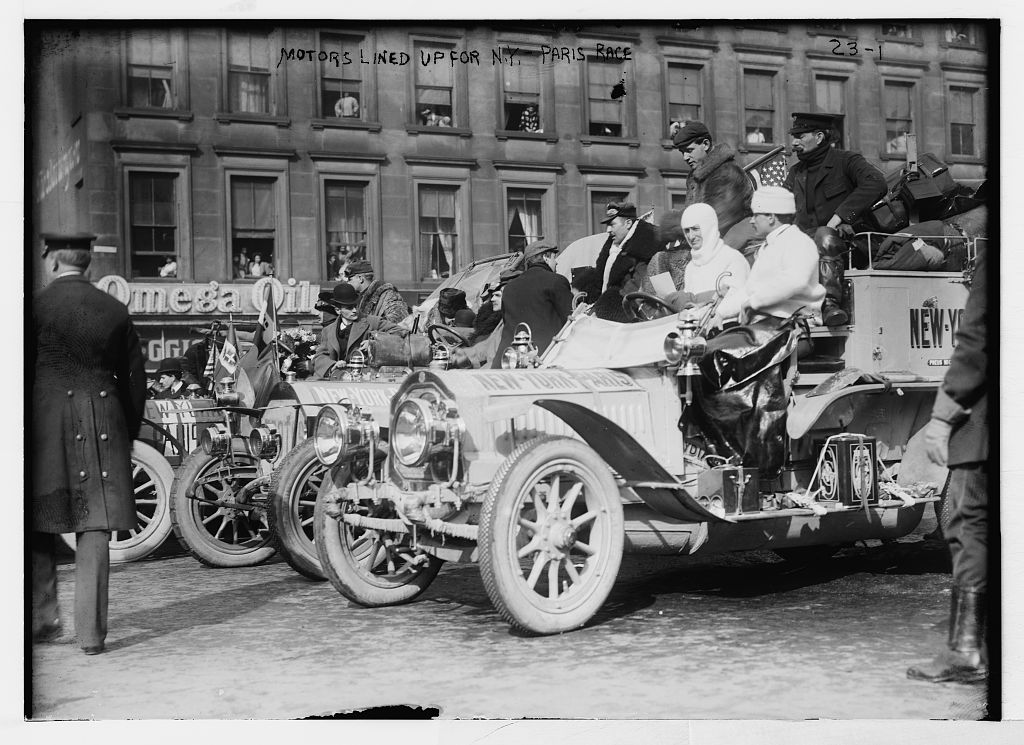
The cars line up in Times Square, ready to race around the world.
It didn’t take long for the field of six to narrow. The Sizaire-Naudin got as far as Peekskill, New York, before breaking down and withdrawing from the race. The Moto-Bloc faired slightly better, making it to Iowa before mechanical problems prevented it from going any further.
The others journeyed on, braving the difficult conditions. At one point, the Thomas car took thirteen hours to cover eight miles through snowy Indiana. When no roads were available, the cars often rode over train tracks.
By the time Roberts reached Cheyenne, Wyoming, he quit the race, claiming a prior commitment in a separate racing contract. Schuster took over the wheel, determined to finish the race.
The Thomas car maintained a lead in the race upon reaching San Francisco after forty-one days, eight hours, and fifteen minutes. A ship then took the vehicle to Alaska, but conditions there proved too impossible to overcome, so it was sent back to Seattle, and then rerouted across the Pacific to Japan. After driving across the country’s narrow roads, another ship carried the Thomas crew across the Sea of Japan into Vladivostok, Siberia.
The Protos, however, had suffered mechanical issues and was carried by train from Idaho to Seattle, where it boarded a ship straight to Vladivostok. As a result, the team was penalized fifteen days. Additionally, the Thomas Flyer was awarded fifteen days for the time it lost sailing to Alaska.
The Zust and the De Dion arrived in San Francisco by April 10 and followed the Thomas car’s path by steamer to Seattle and then Japan—where the De Dion bowed out of the competition.
Only the Protos, Zust and the Thomas Flyer were left to brave their way through the perils of Siberia, although the Italian car was far behind the Germans and Americans. The race had essentially become a two-car battle of wills.
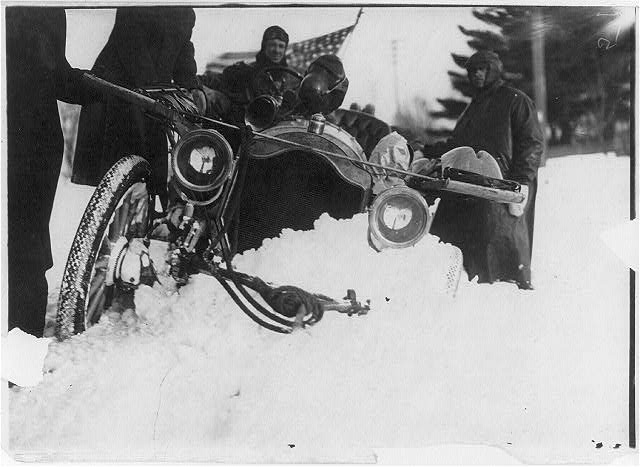
Snow was a common, and constant, obstacle for the competitors.
According to a Sunday Times article from April 19, 1908, Vladivostok would offer immediate challenges. “At Vladivostok they will feel for a moment that they have found again the civilization of the West,” began Luigi Barzini, a journalist who had accompanied the Italian team that won the 1907 Peking to Paris race. “Its appearance is smiling, because it is new, and new cities have always the freshness and the gayety of youth. As yet Vladivostok is not ripe for automobiling. Everything has been thought of there except roads. … Fifty miles from Vladivostok, near Lorenzoff, the last outposts of the coast mountains vanish along the horizon, and plains without end begin. For the automobiles this part of the trip will be slow, arduous, and filled with small hardships; there will be precipitous descents, steep climbing amid reddish rocks, and afterward, on level ground, soft, swampy stretches.”
Indeed, at one point it took the Thomas car four days to cover sixty miles through Siberian mud.
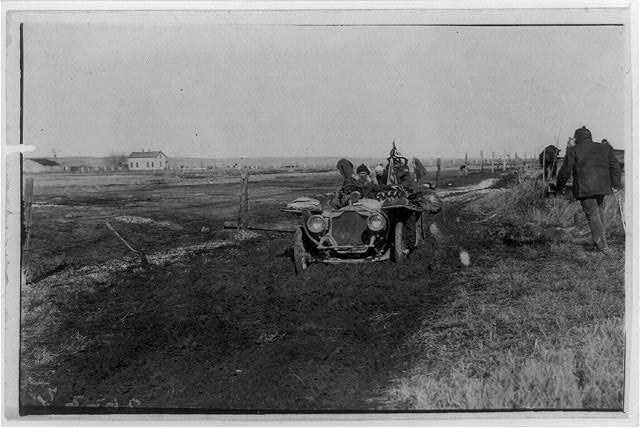
A fight through the mud.
Cultural challenges also awaited as the cars crossed Asia into Europe. A June 28 article from the Times recounted several events from Day 134 in Siberia. For example, a dozen men and women rushed through a gate at the Thomas car as the team rested. The crew, thinking they were under attack, prepared for battle, but quickly discovered they were simply being greeted by a group of friendly Russians. As they journeyed on, however, an attack did occur—by mosquitos. According to the report, “They got into eyes, ears, noses, and mouths when the crew stopped to oil the car or repair the tires and made life miserable.”
By now Schuster, who had been the sole driver since Roberts fled, was exhausted. “The strain of the actual work at the wheel and the vigilance necessary to escape danger, combined with the lack of rest and good food, has so worn upon him that he falls asleep whenever possible, often at the banks of rivers while waiting for the ferries,” remarked the Times correspondent. Soon after, Schuster allowed Miller to take a turn at the wheel, which gave the Thomas car new life.
The Protos, which maintained a lead at this point in the race, was facing its own share of difficulties. Near the town of Mariinsk, the Germans encountered a stream that was more than two hundred feet wide and six feet deep. The crew, with the help of the entire village, affixed big logs under and at the sides of the car to keep it afloat, and had four horses tow it across. Their successful crossing took ten hours. Later, the Protos came upon a mud road, causing the car to sink to its wheeltops. Six horses eventually pulled it to freedom. Shortly after the Thomas car found itself on the same road, but made it through with minimal difficulty.
By July 30, after 169 days of travel, the Thomas car entered Paris. Yet it almost didn’t make it to the finish line. A police officer stopped the vehicle upon entering the city claiming that it had no working headlight, and therefore, according to the law, could not proceed. A passing bicyclist witnessed the scene and offered to load his bike into the car. The bicycle had a functioning headlight, and the officer allowed them to pass.
At 6:00 pm the Thomas car had successfully completed the race. Although the Protos had arrived four days earlier, its 15-day penalty gave the Americans the victory. The Zust made it to Paris more than a month later, on September 17.
“The treads of its tires were torn and snagged, and its hood was dented and bent with stress of many a bump. For all its wear it had a look of power,” a Times reporter described upon the Thomas’s return. “Parts of the body had been cut away as souvenirs, while the whole surface was covered by a countless number of autographs gathered in every part of the world which it circled. The blue body was so covered with mud that it looked gray from a distance, but the mud and grime exactly fitted it—told its story graphically.”
Today, the victorious Thomas Flyer can be seen at the National Automobile Museum in Reno, Nevada. By comparison, it’s just a short road trip from any of the fifty states.

